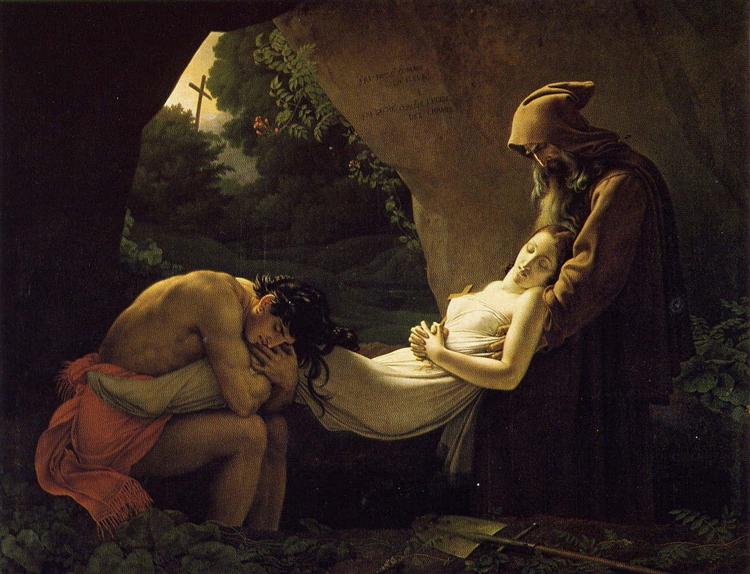What do you feel when looking at The Burial of Atala? The mourning of the young man has often infected the viewer’s emotions. This painting was painted by Anne-Louis Girodet de Roucy-Trioson, an 18th-19th century French Painter. Burial of Atala was created based on a novella written by François René Chateaubriand. The story set in the 1700s in America, tells about the love story between Atala, the Christian girl, and her beloved, an Indian Native man named Chactas.
Why are we sad when looking at the miserable painting, or relax when looking at the calm painting? Leon Battista Alberti, a 15th-century Italian humanist, architect, and author, mentioned the concept of istoria as a narrative scenario that portrays human gestures and projects the emotion of the actors. Istoria aims to impact the viewers with a powerful effect on emotions. It is usually found in figures in classical history and mythology.
Leonardo Da Vinci emphasized the studies of human anatomy to represent suitable emotions of figures through its postures and facial expressions. Both Alberti and Da Vinci convinced that painting capable of conveying emotions, like sadness, anger, love, joy, and fear. (Gyöngyvér Horváth, “Visual Learning in Storytelling Images: Emotional Narrative”)
Recent neuroscience studies suggest the Mirror Neuron system is responsible in art production and art perception. Gallese and colleagues’ experiments on macaque monkeys found activation of neuron system when the macaques observed a similar action performed by the experimenter or other subjects. Observing action activates the same neural networks as those used to perform these activities. Gallese and colleagues then called ‘mirror neurons’ for the neuron system that mirroring visual input into motor neuronal activities.
The activation of the mirror neuron system results ’embodied simulation’ in which there is no difference in neuronal level between first-person experience and third-person experience. For instance, we feel hurt when looking at a picture of finger cuts. We feel as if it is our own experience.
The ‘embodied-simulation’ also occurs on the art receiver. The content and the technique production of artworks (like chisel marks, texture, brushwork) activates ‘embodied simulations’ that trigger the emphatic feelings of the art receiver. (Bartlomiej Piechowski-Jozwiak, François Boller, and Julien Bogousslavsky, “Universal Connection through Art: Role of Mirror Neurons in Art Production and Reception”)
Thus, arts stimulate not only emotions but also bodily sensations and actions. As Leon Battista Alberti six century ago said, “We mourn with the mourners, laugh with those who laugh, and grieve with the grief-stricken.”

